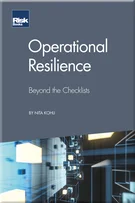Behavioural Risk Management: Closing Thoughts
Preface
An Introduction to Behavioural Risk Management
Risk Management Context
Value-at-Risk as the Dominant Risk Management Tool in the Financial Industry
Case Studies on Risk Management Failure
The Role of Regulation in Risk Management
Advances in Behavioural Economics and Finance
Behavioural Issues with Probability
Systems Theory
Using Scenarios
Making Robust Decisions
Advances in the Risk Management Process
Behavioural Risk Management in the Financial Markets
Countervailing Power
Behavioural Risk Management: Closing Thoughts
Appendix: Selective list of Behavioural Biases
Bibliography
Behavioural economics and all its derivatives have gained importance in academia over the last few decades. Economists such as Thaler have gradually come to the conclusion that the adjective “behavioural” should be dropped: by now, economics as a science should embrace human behaviour along with all its irrationality. Risk management as a profession (not necessarily a science) has developed roughly during the same timeframe, but has focused on traditional economic theories. Stochastic techniques have become the cornerstone of both the risk management practice and regulatory methodologies. VaR has become the only central risk measure, with some variants being derived from the same principle, such as earnings-at-risk. The regulatory focus on VaR has further supported this convergence, leading to a certain myopic effect. Those risk managers that included other risk management techniques, such as maximum loss or scenario techniques, have come a long way in convincing their colleagues and the decision-makers around them. Figure 14.1 shows how VaR relates to other techniques in the risk management toolkit in relation to the problems that need to be addressed. The figure illustrates why
Copyright Infopro Digital Limited. All rights reserved.
As outlined in our terms and conditions, https://www.infopro-digital.com/terms-and-conditions/subscriptions/ (point 2.4), printing is limited to a single copy.
If you would like to purchase additional rights please email info@risk.net
Copyright Infopro Digital Limited. All rights reserved.
You may share this content using our article tools. As outlined in our terms and conditions, https://www.infopro-digital.com/terms-and-conditions/subscriptions/ (clause 2.4), an Authorised User may only make one copy of the materials for their own personal use. You must also comply with the restrictions in clause 2.5.
If you would like to purchase additional rights please email info@risk.net







